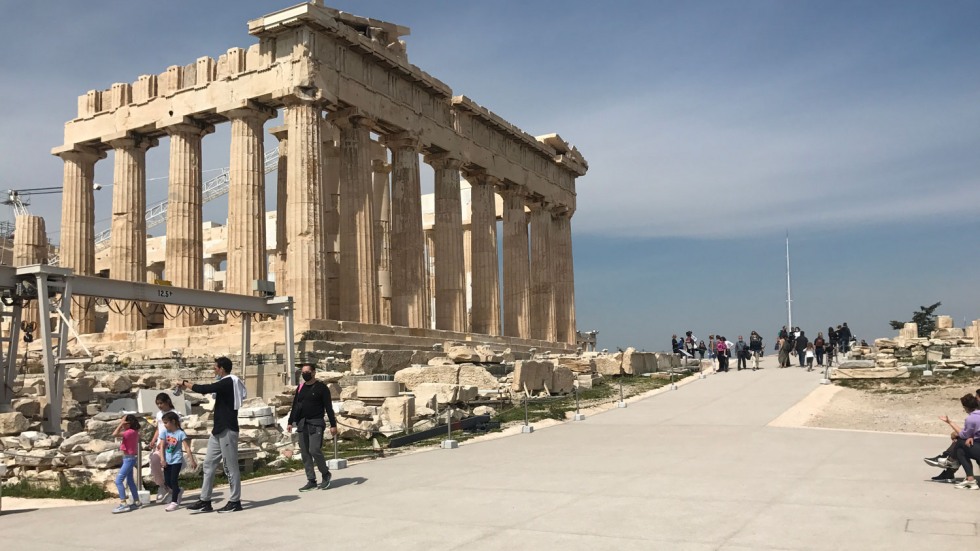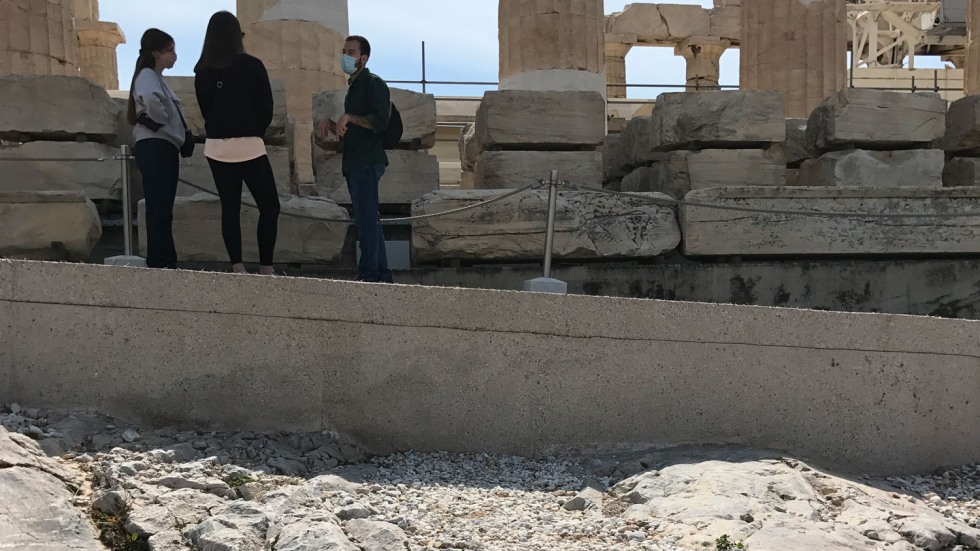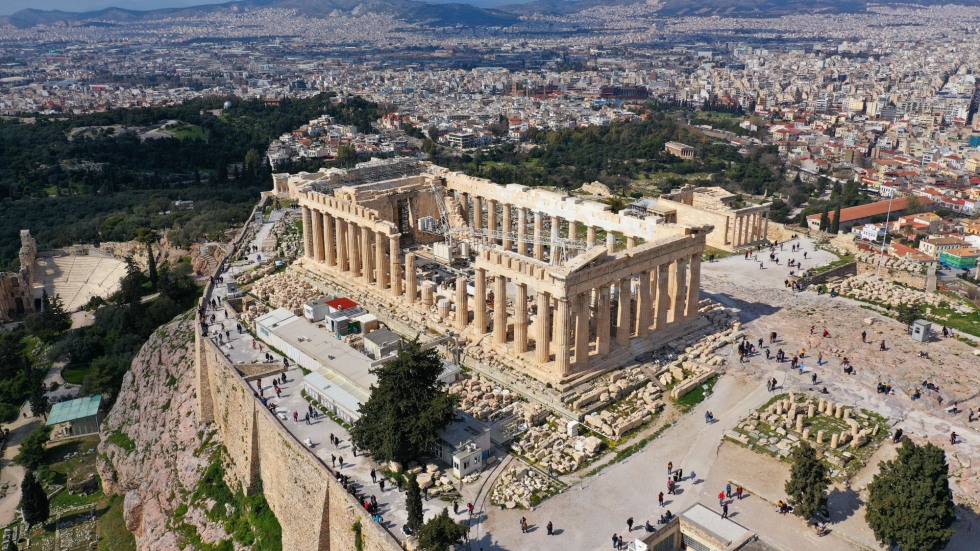PROVIDENCE, R.I. [Brown University] — After closing for nearly five months in the midst of the COVID-19 pandemic, the Acropolis of Athens — one of the world’s most iconic ancient wonders — reopened to the public in March 2021. And when it did, it was practically unrecognizable to Yannis Hamilakis, a professor of archaeology and modern Greek studies at Brown University.
Hamilakis was astounded to see that crews had paved over much of the rocky summit to create wide paths of reinforced concrete. The Committee for the Conservation of the Acropolis Monuments — which advises the Acropolis Restoration Service, a special unit of the Greek Ministry of Culture and Sports — had deemed the work necessary to accommodate visitors with disabilities. The committee revealed in 2020 that it also has plans to reconstruct a Roman marble staircase on the site’s western slope.
Hamilakis and other scholars have decried the renovations, saying the committee’s plans amount to a “Disneyfication” of the historic site that not only fails to meet modern accessibility standards but also erases significant history from before and after classical antiquity. Last spring, he joined hundreds of other scholars in making the case against the changes.
What hidden histories do the Acropolis renovations ignore, and why is such historical exclusion problematic? Hamilakis answered questions about new and proposed construction at the Acropolis, the controversy it has ignited, and the artists, scholars and activists who are actively working to spotlight the site’s full, unvarnished, millennia-long history.
Q: Archaeologists and historians across the globe are in hot debate about the future of the Acropolis. What’s driving these conversations?
In the autumn of 2020, the global archaeological community was taken by surprise when, in the midst of a national lockdown in Greece, we were notified that extensive work would be taking place. They said they were going to lay out broad new pathways in concrete, cementing over large portions of the site.
We were alarmed, because we hadn’t seen any prior study or report that indicated the Ministry of Culture and Sports was planning this work. Typically, work at an ancient site such as the Acropolis — which is so iconic that its most celebrated monument, the Parthenon, has inspired UNESCO’s logo — doesn’t take place until the global community of conservators and architects discusses and debates it extensively. You could say the ministry took advantage of the national lockdown in the middle of the COVID-19 pandemic to conduct this work mostly in secret.
When we archaeologists were first allowed to visit the site and see the work, briefly in November 2020 but mostly in the spring of this year, we were shocked by the extent and type of the interventions. Most of the Acropolis’s non-built area — the parts of the site that aren’t currently occupied by conspicuous monuments — is now paved over with concrete, some of it reinforced. The ministry says it also has plans to expand the concrete paving in the southern part of the site and create a series of concrete terraces on the western side.


